
Haarlem is a city and municipality in the Netherlands. It is the capital of the province of North Holland. Haarlem is situated at the northern edge of the Randstad, one of the more populated metropolitan areas in Europe; it is also part of the Amsterdam metropolitan area. Haarlem had a population of 162,543 in 2021.

Alkmaar is a city and municipality in the Netherlands, located in the province of North Holland. Alkmaar is well known for its traditional cheese market. For tourists, it is a popular cultural destination. The municipality has a population of 111,766 as of 2023.

Dutch cheese farmers traditionally take their cheeses to the town's market square to sell them. Teams (vemen) of official guild cheese-porters (kaasdragers), identified by differently coloured straw hats associated with their forwarding company, carried the farmers' cheese on barrows that weighed about 160 kilograms. Buyers sampled the cheeses and negotiated prices using a ritual system, called handjeklap, whereby buyers and sellers clapped each other's hands and shouted out prices. Once a price was agreed, porters carried the cheese to the weigh house (Waag) and weighed the cheese on a company scale.
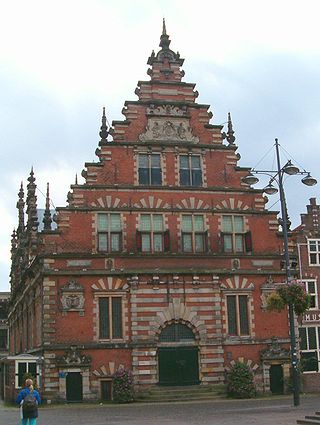
Lieven de Key was a Dutch renaissance architect in the Netherlands, mostly known today for his works in Haarlem. His style is described by Simon Schama as Mannerist.

The Frans Loenenhofje is a hofje in Haarlem, Netherlands, on the Witte Heren straat.

The Hofje van Loo is a hofje on the Barrevoetstraat 7 in Haarlem, Netherlands.
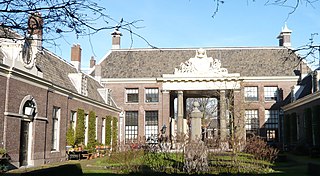
The Teylershofje is a hofje in Haarlem, Netherlands with 24 houses.

Haarlem is one of the cities in the Netherlands that has a number of hofjes. Some of them are still in use with boards of regents. Many of these are members of the Stichting Haarlemse Hofjes. The word 'hofje' just means small garden, because the hofjes are generally small houses grouped around a community kitchen garden with a water pump. Often they were attached to a larger field for bleaching linen or growing orchards, but today those fields have been long used for city expansion and only the central gardens can still be seen.
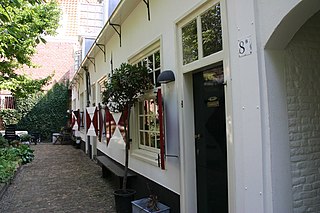
The Brouwershofje is a hofje on the Tuchthuisstraat in Haarlem, Netherlands.

The Vrouwe- en Antonie Gasthuis is a hofje on the Klein Heiligland 64a in Haarlem, Netherlands. It is open on weekdays from 10-17.00.

Het Dolhuys( meaning in English: "The crazy house") is a national museum for psychiatry in Haarlem, Netherlands. The museum was founded in 2005 in the newly renovated former old age home known as Schoterburcht, located just across the Schotersingel from the Staten Bolwerk park. The whole complex is much older than that however, having been a hospital for centuries known as the Leproos-, Pest- en Dolhuys.
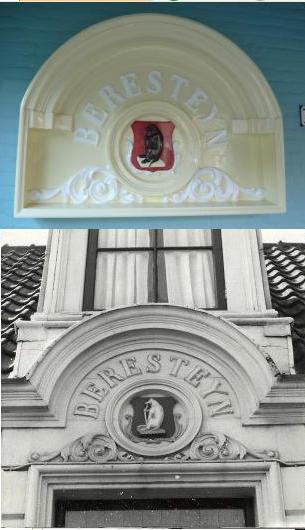
The Hofje van Codde en Beresteyn is a hofje in Haarlem, Netherlands. The current building is from 1968 and is located on the J. Cuyperstraat, which is named for the architect who designed the Cathedral of Saint Bavo next door, Joseph Cuypers. This hofje is the wealthiest hofje foundation in Haarlem with the most modern facilities for its inhabitants. Poor (devote) Catholic women of Haarlem 60 years and older are still welcome to live there for free.

The Janskerk or St. John's Church is a former church in the Dutch city of Haarlem. Today it houses the North Holland Archives.
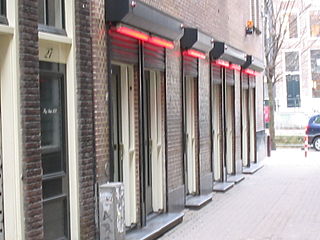
Window prostitution is a form of prostitution that is fairly common in the Netherlands and surrounding countries. The prostitute rents a window plus workspace off a window operator for a certain period of time, often per day or part of a day. The prostitute is also independent and recruits her own customers and also negotiates the price and the services to be provided.
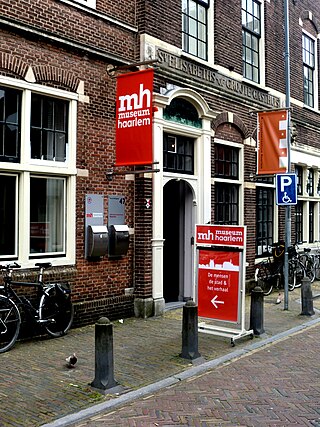
Museum Haarlem is a city museum on Groot Heiligland 47, Haarlem, Netherlands, located across the street from the Frans Hals Museum. It shares its front door with the ABC Architectuurcentrum Haarlem, which is located next door. The museum is devoted to presenting and preserving the cultural history of Haarlem and the surrounding region.

The St. Elisabeth Gasthuis (EG) is a former hospital complex of buildings founded in 1581 in Haarlem on the Gasthuisvest. The last location of the hospital on the Boerhaavelaan retains its hospital function and is part of the Spaarne Gasthuis (SG) today, formerly known as Kennemer Gasthuis (KG). The hospital complex on the Gasthuisvest was built for the "Minnebroers" monastery and was reclaimed after the Protestant reformation in 1581 and given by the city council to the hospital. As a hospital during four centuries, the complex underwent many major renovations. The main facade dates from 1871.

The Coomanshof is a former hofje in Haarlem, Netherlands, on the Witte Heren straat.

The Waag building is a National monument (Rijksmonument) listed building on the Waagplein in Alkmaar in the Netherlands. On this square Waagplein every Friday from April till the second week of September, the famous cheese market is held. The Dutch Cheese Museum and the tourist information Office (VVV) are also in the building. In the tower is a famous carillon weekly played by a carillonneur and also automatically by a drum chiming the quarters of the hour. There is also the famous automatic horse with knights play in the tower with an automatic trumpetplayer.

The St. Barbara Gasthuis was a hospital and later a hofje on the Jansstraat in Haarlem, Netherlands. All that remains is a former gateway.






















